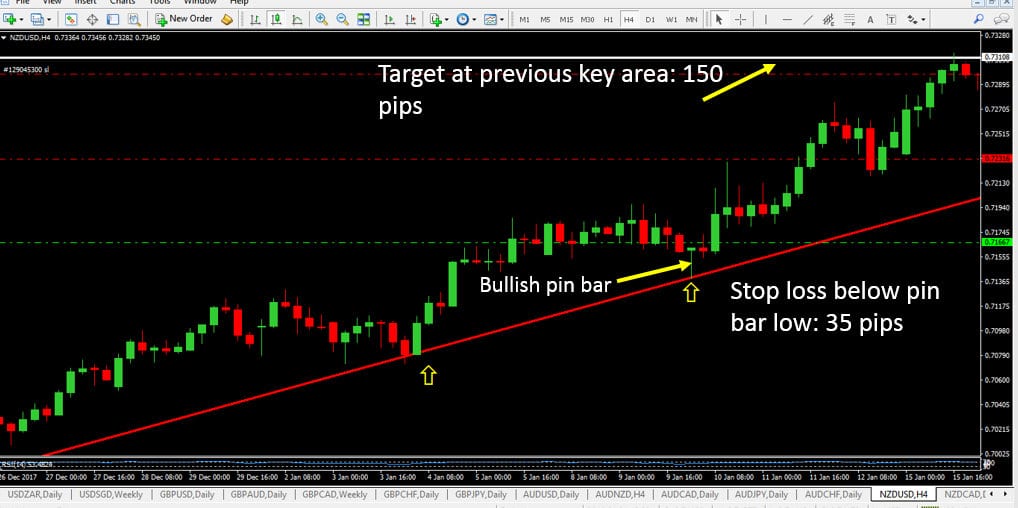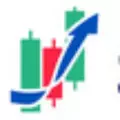Top Forex Brokers For You
Risk Management in Forex Trading
The biggest mistake most traders are making in their early trading career is not monitoring the risk/reward ratio for their positions.
You don’t need a 100% win ratio to be profitable, the most profitable trading systems actually aim for a win ratio of only 55-60%. You can even be profitable with a 50% win ratio, as long as your winning positions are larger than your losing ones.
In simple terms, the risk: reward ratio is a measure of how much you are risking in a trade for what amount of profit.
For example, if you risked $500 in a trade and the profit you got was $1500 then $500:$1500=1:3, which simply means that your risk-to-reward ratio was 1:3 or 3R.
This also means that for every $1 you risk, you have the “potential” to make $3 profit.
Money or risk management in Forex and synthetic indices trading is the term given to describe the various aspects of managing your risk and reward on every trade you make.
If you don’t fully understand the implications of money management as well as how to actually implement money management techniques, you have a very slim chance of becoming a consistently profitable trader.
Many traders do not take full advantage of the power of risk reward because they don’t have the patience to consistently execute a large enough series of trades in order to realize what risk-reward can actually do.
Risk reward does not mean simply calculating the risk and reward on a trade, it means understanding that by achieving 2 to 3 times risk or more on all your winning trades, you should be able to make money over a series of trades even if you lose the majority of the time.
When you combine the consistent execution of a risk/reward of 1:2 or larger with a high-probability trading edge like price action, you have the recipe for a very potent Forex trading strategy.
READ: HOW TO TRADE SYNTHETIC INDICES
Let’s take a look at the 4hr chart of NZDUSD to see how to calculate risk-reward on a pin bar setup. In the chart below there was a bullish pin bar that formed on trendline support in an up-trending market, so the price action signal was solid.
To calculate the risk we look at the placement of the stop loss. In this case, the stop loss is placed just below the low of the pin bar (35 pips away).
We need to calculate how many lots we can trade given the stop-loss distance. In general, the larger the stop loss distance, the smaller the lot size we trade.
We are going to assume a hypothetical risk of $100 for this example. We can see this setup has so far grossed a reward 4.2 times the risk, which would be $420.

Let's simplify it a little and use the example of a reward 3 times the risk or 3R.
With a reward of 3 times risk you can lose 18 trades or 72% and still make money. That’s right; you can lose 72% of your trades with a risk/reward of 1:3 or better and STILL make money…..over a series of trades.
Here is the math real quick:
18 losing trades at $100 risk = -$1800, 7 winning trades with a 3 R (risk) reward = $2100. So, after 25 trades you would have made $300, but you also would have had to endure 18 losing trades…and the trick is that you never know when the losers are coming. You might get 18 losers in a row before the 7 winners pop up, that is unlikely, but it IS possible.
So, risk/reward essentially all boils down to this main point; you have to have the fortitude to set and forget your trades over a large enough series of executions to realize the full power of risk/reward.
Now, obviously, if you are using a high-probability trading method like price action strategies, you aren’t likely to lose 72% of the time. So, just imagine what you can do if you properly and consistently implement risk-reward with an effective trading strategy like price action.
Unfortunately, most traders are either too emotionally undisciplined to implement risk-reward correctly, or they don’t know how to. Meddling in your trades by moving stops further from entry or not taking logical 2 or 3 R profits as they present themselves are two big mistakes traders make.
They also tend to take profits of 1R or smaller, this only means you have to win a much higher percentage of your trades to make money over the long-run.
Remember, trading is a marathon, not a sprint, and the WAY YOU WIN the marathon is through consistent implementation of risk-reward combined with the mastery of a truly effective trading strategy.
Position Sizing
Position sizing is the term given to the process of adjusting the number of lots you trade to meet your pre-determined risk amount and stop loss distance. That is a bit of a loaded sentence for the newbies. So, let’s break it down piece by piece. This is how you calculate your position size on every trade you make:
1)First, you need to decide how much money in dollars (or whatever your national currency is) you are COMFORTABLE WITH LOSING on the trade setup.
This is not something you should take lightly. You need to genuinely be OK with losing on any ONE trade because as we discussed in the previous section, you could indeed lose on ANY trade; you never know which trade will be a winner and which will be a loser.
2) Find the most logical place to put your stop loss. If you are trading a pin bar setup this will usually be just above/below the high/low of the tail of the pin bar. Similarly, the other setups I teach generally have “ideal” places to put your stop loss.
The basic idea is to place your stop loss at a level that will nullify the setup if it gets hit, or on the other side of an obvious support or resistance area; this is logical stop placement. What you should NEVER DO, is place your stop too close to your entry at an arbitrary position just because you want to trade a higher lot size, this is GREED, and it will come back to bite you much harder than you can possibly imagine.
3) Next, you need to enter the number of lots or mini-lots that will give you the $ risk you want with the stop loss distance you have decided is the most logical. One mini-lot is typically about $1 per pip, so if your pre-defined risk amount is $100 and your stop loss distance 50 pips, you will trade 2 mini-lots; $2 per pip x 50 pip stop loss = $100 risked.
The three steps above describe how to properly use position sizing. The biggest point to remember is that you NEVER adjust your stop loss to meet your desired position size; instead, you ALWAYS adjust your position size to meet your pre-defined risk and logical stop loss placement. This is VERY IMPORTANT, read it again.
The next important aspect of position sizing that you need to understand, is that it allows you to trade the same $ amount of risk on any trade. For example, just because you have to have a wider stop on a trade doesn’t mean you need to risk more money on it, and just because you can have a smaller stop on a trade does not mean you will risk less money on it.
You adjust your position size to meet your pre-determined risk amount, no matter how big or small your stop loss is. Many beginning traders get confused by this and think they are risking more with a bigger stop or less with a smaller stop; this is not necessarily the case.
Let’s take a look at the current daily chart of the EURUSD below. We can see two different price action trading setups; a pin bar setup and an inside-pin bar setup. These setups required different stop loss distances, but as we can see in the chart below we still would risk the exact same amount on both trades, thanks to position sizing:
Conclusion
To succeed at trading the Forex markets, you need to not only thoroughly understand risk-reward, position sizing, and risk amount per trade, you also need to consistently execute each of these aspects of money management in combination with a highly effective yet simple to understand trading strategy like price action.



















